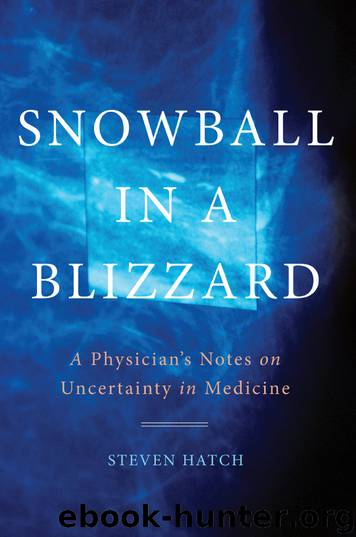Snowball in a Blizzard by Steven Hatch

Author:Steven Hatch
Language: eng
Format: epub
ISBN: 9780465098576
Publisher: Basic Books
Published: 2016-01-12T16:00:00+00:00
FIGURE 6.1. From the Report of the National Cholesterol Education Program Expert Panel on Detection, Evaluation, and Treatment of High Blood Cholesterol in Adults, 1988. Referenced in Witzum, J. L., “Current Approaches to Drug Therapy for the Hypercholesterolemic Patient,” Circulation 1989; 80:1101–1114.
So if the “cholesterol theory” is correct—and there are decades of research suggesting that this is, at the very least, partially true—and lowering cholesterol through medications does prolong lives, then the biggest bang for the buck should be seen in people with either very high cholesterol levels or existing heart disease or both. The 4S trial, and many others like it, owe their great success in part to the fact that the right kind of person who was most likely to benefit from statins was enrolled in the studies.* But as time has gone on and statins have enjoyed ever-greater success, both in the commercial and scientific sense of the word, there has been a steady expansion of the “statin market”—that is, the kind of people for whom statins are recommended. With this expansion, the dramatic beneficial effects of statins become smaller, the number of patients that need to be treated for a life to be saved rises steadily, and one can be less certain that taking such drugs will be of unquestionable benefit.
The average total cholesterol for the 4S cohort was about 260, with an average LDL of just under 190. These are extremely high numbers. Additionally, to be eligible for the 4S trial, one had to have a history of heart disease, so these subjects were, in some sense, cherry-picked to be the most likely to benefit from statins.
Late in 2013, the American Heart Association and the American College of Cardiology issued a new set of guidelines for treating cholesterol with statins. The revised guidelines rely on a complicated algorithm that is difficult even for physicians to grasp; a calculator is required to assess one’s lifetime risk of having heart disease for which a statin should provide protection. Complex or not, the guidelines appear to have dramatically increased the total number of people for whom statins are now recommended, and moreover they appear to depart significantly from using “bad” LDL cholesterol levels as one of the principal points of entry for assessing statin eligibility. An analysis of the new guidelines that appeared in the New England Journal of Medicine suggested that as many as 13 million new people are now theoretically in the statin pool, representing a 30 percent increase from the previous guidelines.
Whether the vast majority of these newly statin-eligible patients will benefit from treatment, however, is much less clear, and we lurch toward the middle of the spectrum of certainty. A major segment of this new group includes people who have a variety of increased risks for heart disease regardless of their LDL cholesterol level (such as smoking and high blood pressure). But there have been precious few trials that have evaluated whether using a cholesterol-lowering medication in people whose cholesterol is already relatively low will make much of a difference.
Download
This site does not store any files on its server. We only index and link to content provided by other sites. Please contact the content providers to delete copyright contents if any and email us, we'll remove relevant links or contents immediately.
Good by S. Walden(3516)
The Social Psychology of Inequality by Unknown(2985)
0041152001443424520 .pdf by Unknown(2812)
The Checklist Manifesto by Atul Gawande(2807)
The Meaning of the Library by unknow(2532)
Get What's Yours for Medicare: Maximize Your Coverage, Minimize Your Costs by Philip Moeller(2349)
Guns, Germs and Steel by Diamond Jared(2332)
Borders by unknow(2279)
23:27 by H. L. Roberts(2222)
And the Band Played On by Randy Shilts(2163)
Being Mortal: Medicine and What Matters in the End by Atul Gawande(2091)
A Leg to Stand On by Oliver Sacks(2020)
The Hot Zone by Richard Preston(1994)
More Than Words (Sweet Lady Kisses) by Helen West(1834)
The Valachi Papers by Peter Maas(1829)
The Laws of Medicine by Siddhartha Mukherjee(1769)
The Andromeda Strain by Michael Crichton(1717)
The Obesity Epidemic by Robyn Toomath(1653)
Pharmacy Practice and The Law by Richard Abood(1555)
